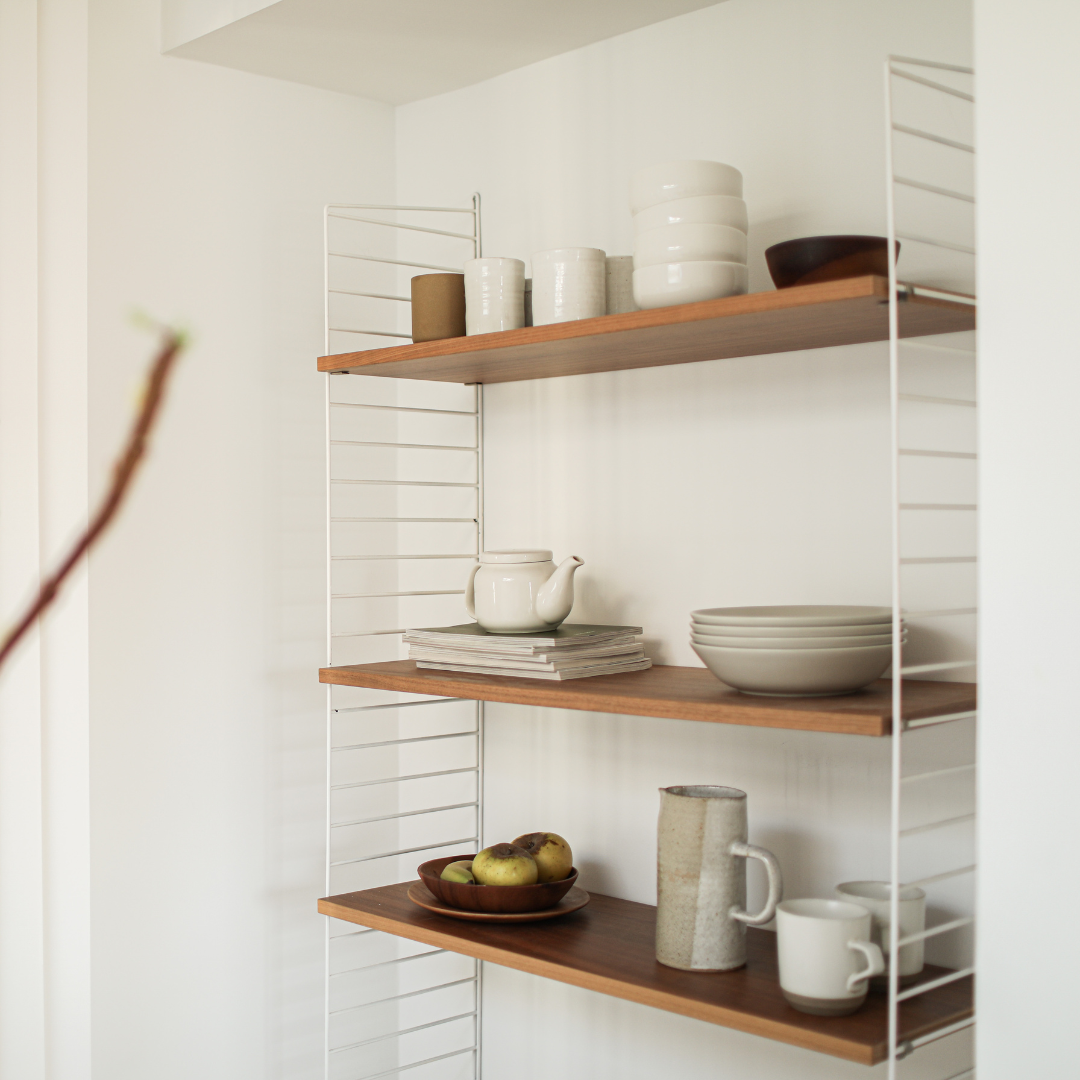Open shelving has become a popular design trend in kitchens and living spaces, attracting attention for its aesthetic appeal and functionality. This style offers both advantages, such as easy access to items and the ability to showcase personal collections, and disadvantages, like increased dust accumulation and the need for constant organization. Many homeowners find themselves torn between the visual charm of open shelves and the practical concerns that come with them.
Advocates often highlight the opportunity to display decorative dishware or books, enhancing the overall ambiance of a room. Conversely, critics point to the challenges of keeping everything tidy and the lack of hidden storage for less visually appealing items.
As individuals design their spaces, they must weigh these factors carefully, determining whether the benefits of open shelving align with their lifestyle and design philosophy.
Understanding Open Shelving
Open shelving refers to the practice of using shelves without doors to display items in various spaces. This approach can be both functional and aesthetic, providing opportunities for creative displays while also requiring careful organization and maintenance.
What Is Open Shelving
Open shelving consists of horizontal surfaces mounted to walls or supported by brackets. Unlike traditional cabinets, these shelves allow visibility of their contents. They can be made from various materials such as wood, metal, or glass.
Open shelves can be used in kitchens, living rooms, bathrooms, and more. They serve not only as storage but also as decor, enabling homeowners to showcase items like dishes, books, or decorative objects. Effective use of open shelving combines style and function.
Types of Open Shelves
There are several types of open shelves that cater to diverse needs and aesthetics.
- Floating Shelves: Mounted directly to walls, these have no visible brackets, providing a sleek look.
- Bracketed Shelves: Supported by brackets, these offer a sturdy option and come in various designs to match décor.
- Corner Shelves: Designed to utilize corner spaces, these shelves can maximize storage in tight areas.
- Display Shelves: Often used in living areas, these are designed solely for showcasing items.
Each type has its advantages, depending on space, style, and intended use.
Popular Uses in Home Design
Open shelving has gained popularity in modern home design for various reasons.
In kitchens, it allows easy access to frequently used items while showcasing beautiful dishware. In living rooms, it serves as a focal point for books and collectibles, adding character to the space.
In bathrooms, open shelves can hold toiletries and towels effectively, offering both functionality and design appeal.
The versatility of open shelving makes it suitable for different home styles, from minimalist to rustic. Proper styling transforms these shelves into attractive organizational tools.
Advantages of Open Shelving
Open shelving offers numerous benefits that can transform a kitchen’s functionality and aesthetics. The following points cover its aesthetic appeal, accessibility, space enhancement, and versatility in design.
Aesthetic Appeal and Style
Open shelves can create a visually striking effect in a kitchen. They allow for the display of attractive dishware, plants, or artful containers, contributing to a personalized style.
With a variety of materials such as wood, metal, or glass, open shelving can enhance the overall decor. It can suit traditional or modern styles, depending on the selection of colors, finishes, and arrangements. Furthermore, this design choice fosters a more open and airy feel, reducing visual clutter.
Ease of Access and Organization
Open shelving promotes easy access to frequently used kitchen items. Items can be seen at a glance, simplifying cooking and meal preparation.
They can be organized according to user preference, which can streamline daily routines. This accessibility can encourage more efficient use of kitchenware, as items do not get buried in cabinets.
Space Enhancement
Open shelves can create the illusion of a larger space, especially in smaller kitchens. By eliminating bulky cabinet doors, there is a sense of openness that contributes to a more spacious atmosphere.
Strategically placed shelves can effectively optimize vertical space, allowing for storage without overcrowding. This can be particularly useful in compact kitchens where every square inch counts.
Versatility in Kitchen Design
Open shelves can fit into various kitchen layouts and styles, making them a flexible choice for homeowners. They can be installed in any area, such as above countertops or in dining spaces, to meet specific needs.
Additionally, they can complement other storage solutions, like cabinets or pantry units. This adaptability enhances the overall functionality of a kitchen, enabling a harmonious blend of design and practicality.
Potential Drawbacks of Open Shelving
Open shelving can enhance a space’s aesthetics but comes with specific challenges. It’s essential to consider maintenance, storage limitations, and the potential for clutter.
Maintenance and Cleaning Challenges
Open shelves require regular maintenance and cleaning. Without doors to shield items from kitchen elements, dust and grease can accumulate quickly. Regular cleaning is essential to keep items looking their best.
Items displayed on open shelves can also require frequent rearranging. This is especially true for dishes and decorative items. Ensuring that everything remains tidy demands ongoing effort.
Choosing materials for open shelving can impact maintenance needs. For example, wooden shelves may require refinishing or conditioning to prevent damage from moisture.
Lack of Concealed Storage
One of the primary drawbacks of open shelving is the absence of concealed storage. This can be particularly limiting in smaller kitchens where maximizing space is critical. Essential kitchen items might need to be left out in the open, detracting from the overall design.
Items needing protection, like appliances or sensitive materials, may not be suitable for open shelving. This situation can force individuals to compromise on aesthetics for functionality. It may also lead to overcrowded spaces as everything is prominently displayed.
Risk of Clutter and Disorganization
Open shelving increases the risk of clutter and disorganization. Without enclosed storage, items are readily visible, making it easy for shelves to become chaotic. This can affect the overall appearance of the kitchen or living space.
Individuals may find it challenging to maintain a curated look. Continuous usage can lead to haphazard stacking of items. It often requires more time and effort to keep the display neat.
Lastly, the temptation to display too many items can overshadow the intentional design. The result may be a cluttered feel, detracting from the open shelving’s original purpose of showcasing select pieces.
Key Considerations Before Choosing Open Shelving
When deciding on open shelving, it is essential to evaluate specific factors that will influence both functionality and aesthetics. This includes determining storage requirements and ensuring a balance between design appeal and everyday practicality.
Assessing Your Storage Needs
Before installing open shelving, one must first assess storage requirements. Individuals should identify the items intended for display and storage. Commonly stored items may include dishware, cookbooks, or decorative elements.
It is important to consider the volume and frequency of use of these items. For example, everyday dishes might remain more accessible on open shelves, while less frequently used items may be better suited for closed cabinets.
Key Questions:
- How often will these items be accessed?
- Is the space limited or ample for open shelving?
A comprehensive inventory will help in selecting the appropriate amount of shelving to accommodate needs effectively.
Balancing Practicality and Design
Open shelving requires a careful balance between functionality and visual appeal. While it can create an inviting atmosphere, maintaining organization is crucial to its success. Items on open shelves can become dusty and require periodic cleaning.
One consideration is the style of the home and the kitchen. Open shelving can complement modern, minimalist designs but may look out of place in traditional settings.
Practical Tips:
- Use decorative baskets or containers for smaller items.
- Arrange frequently used items at eye level.
Choosing the right materials and installation methods can also enhance durability and maintain an attractive look, addressing both practical and design concerns effectively.

